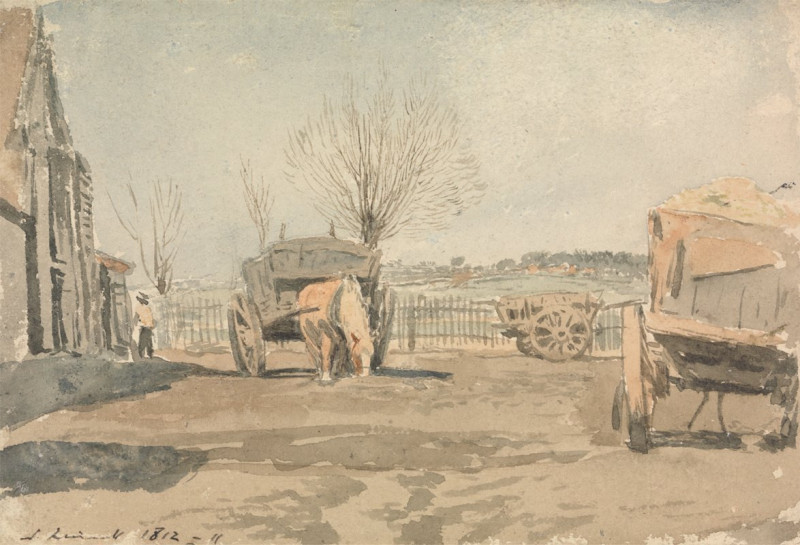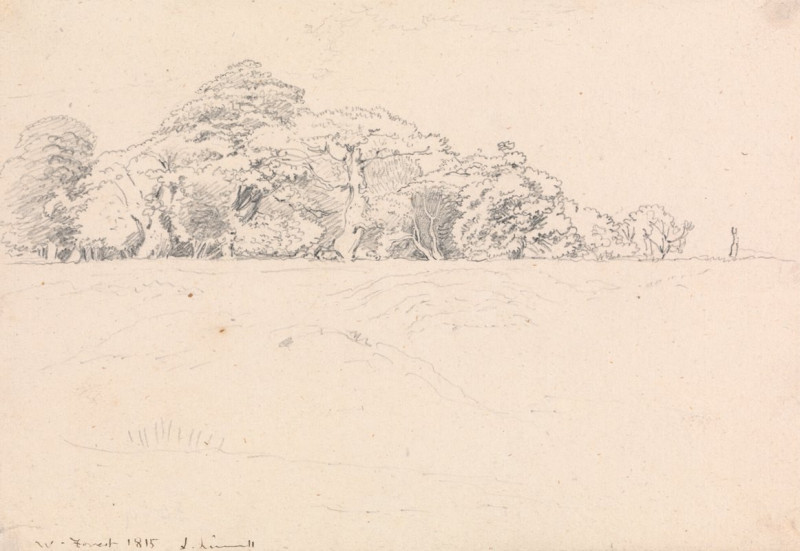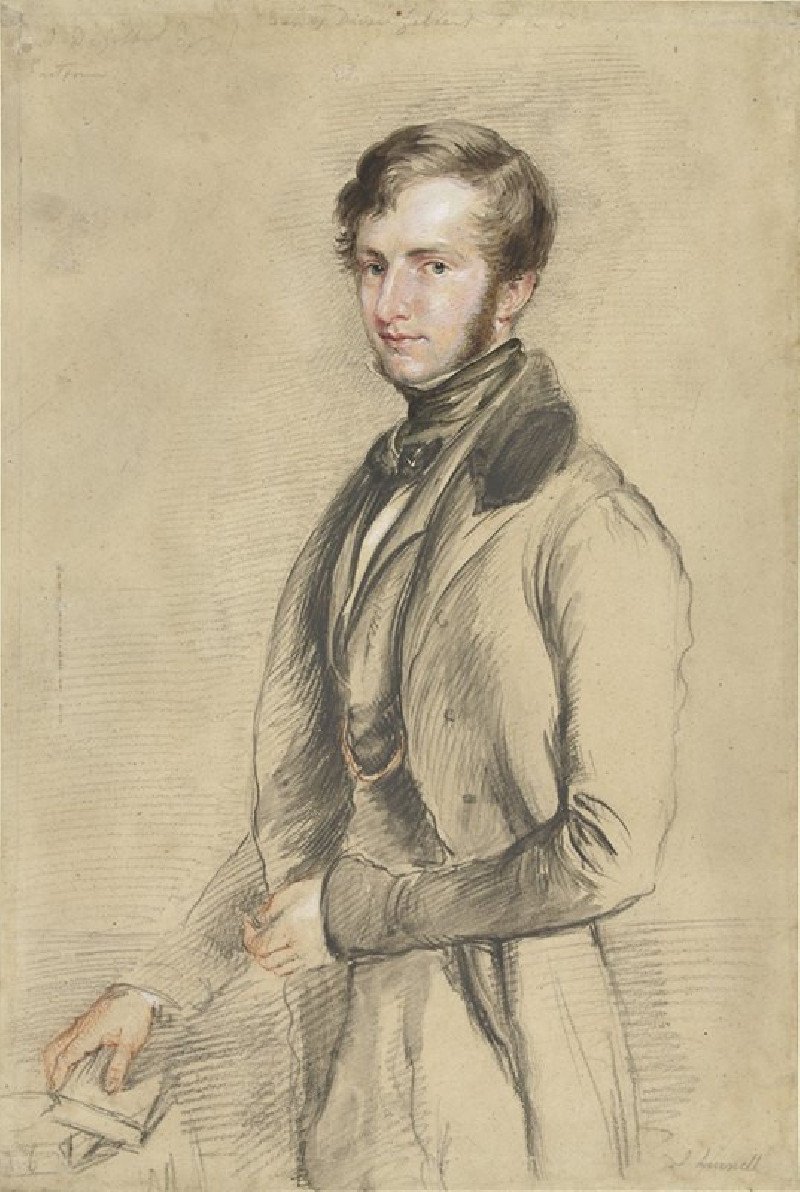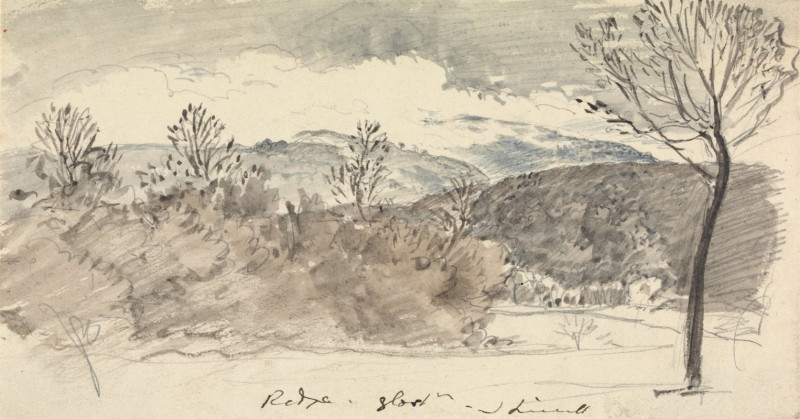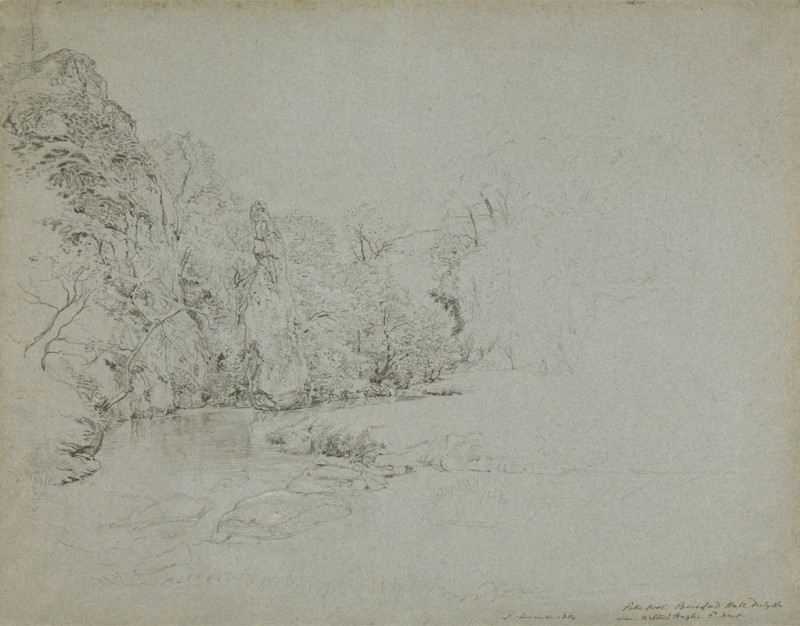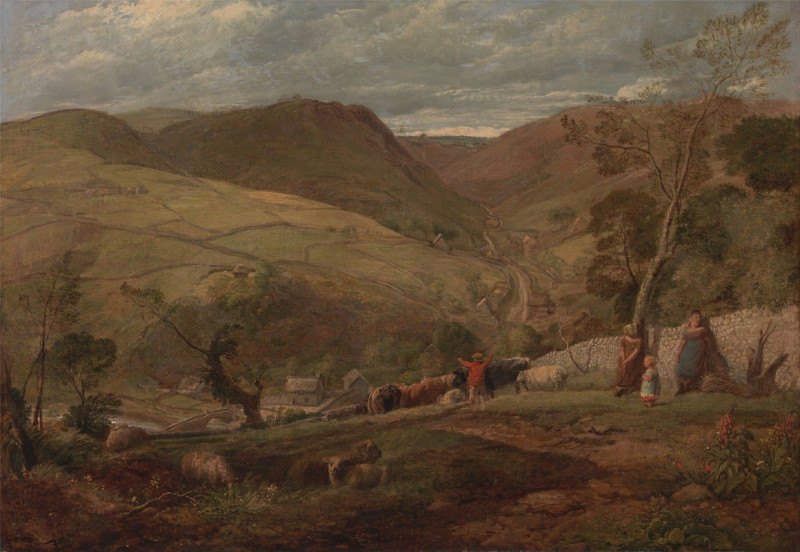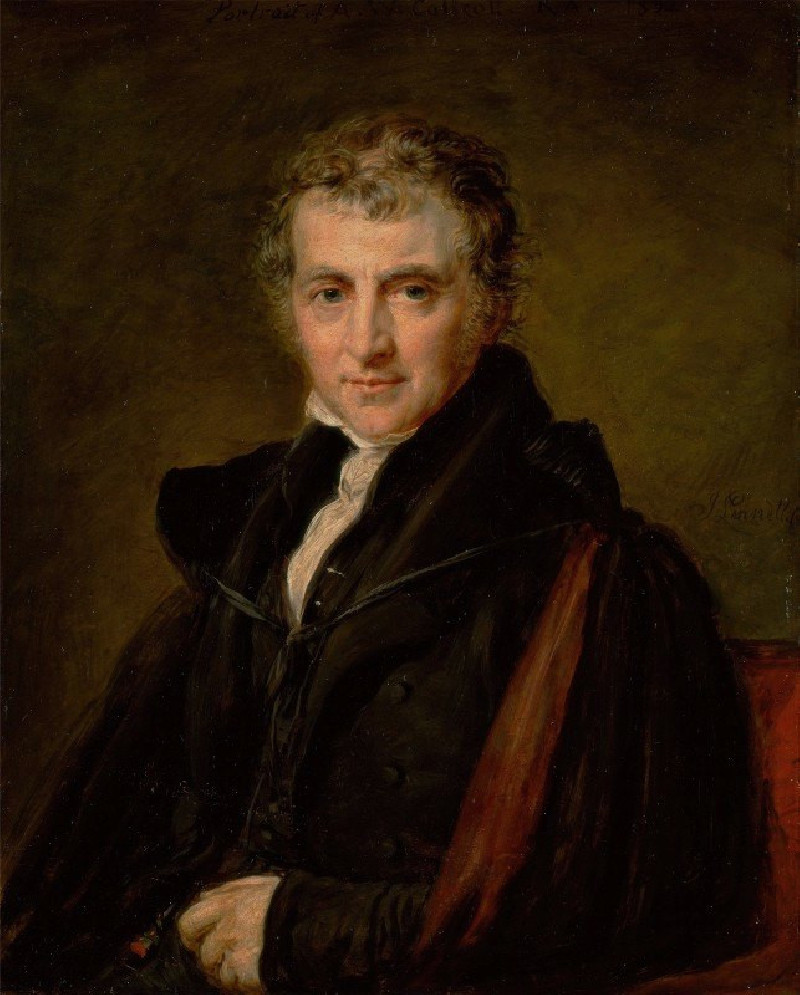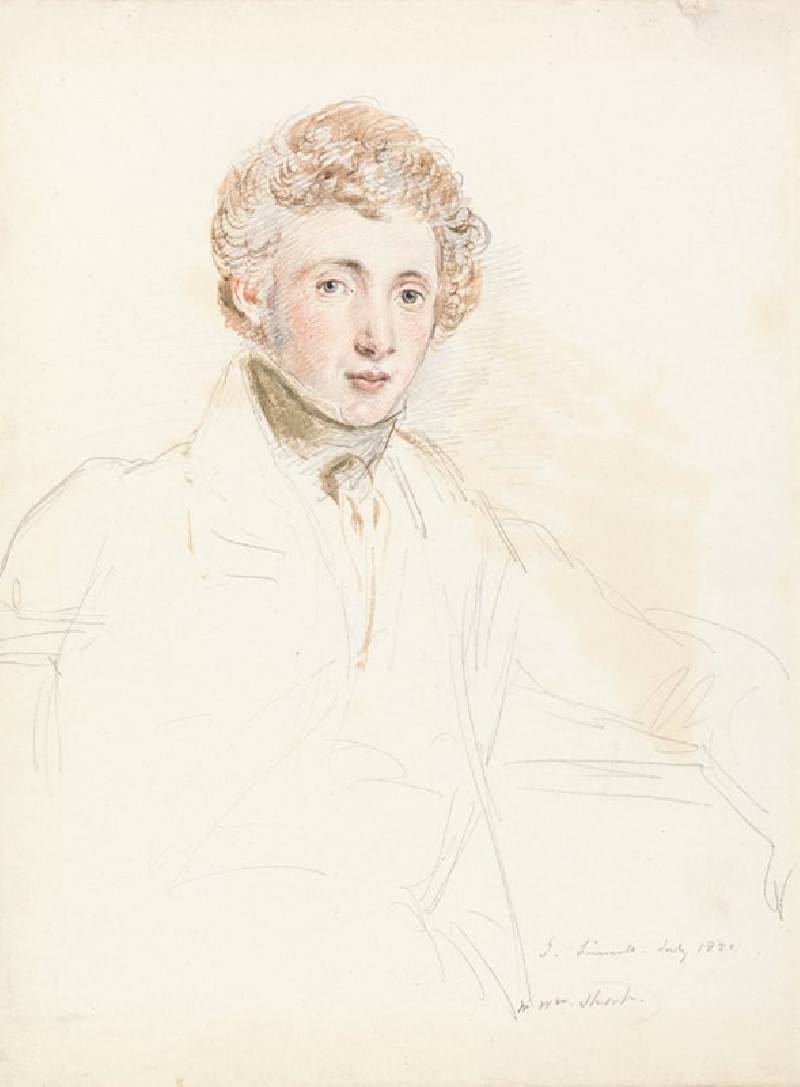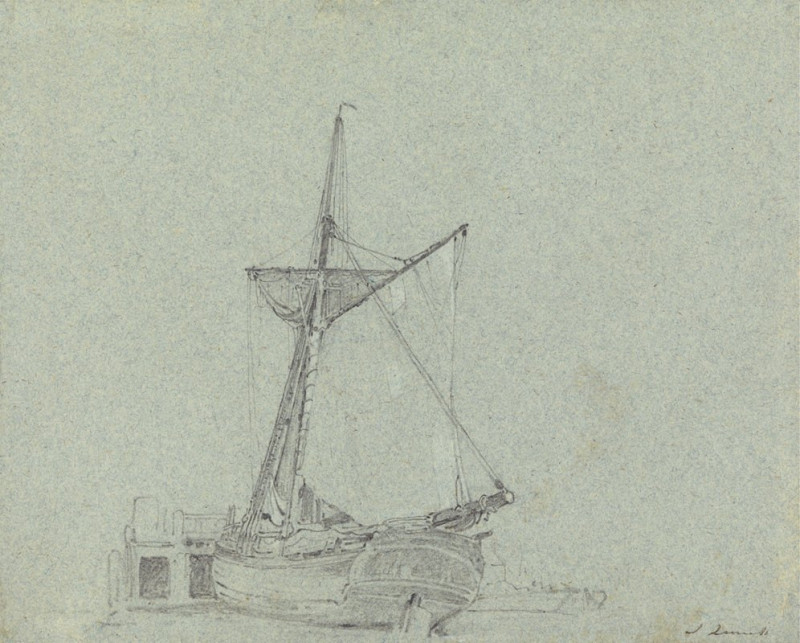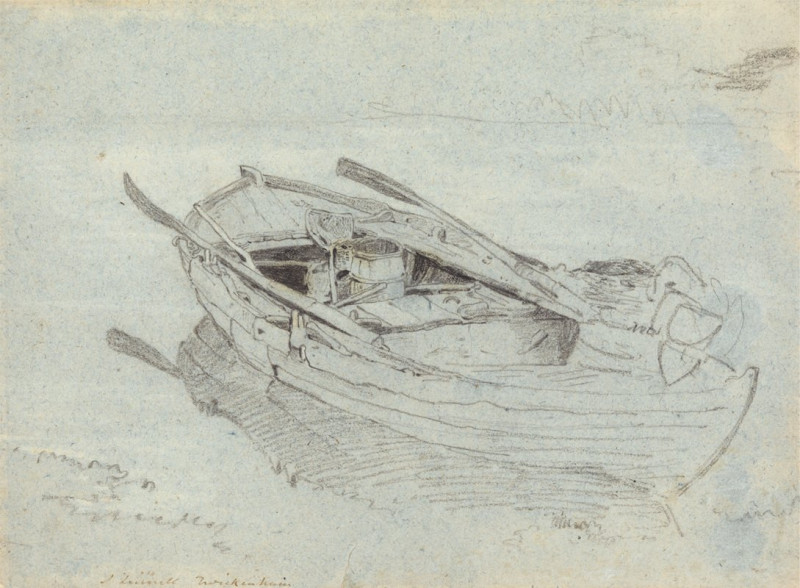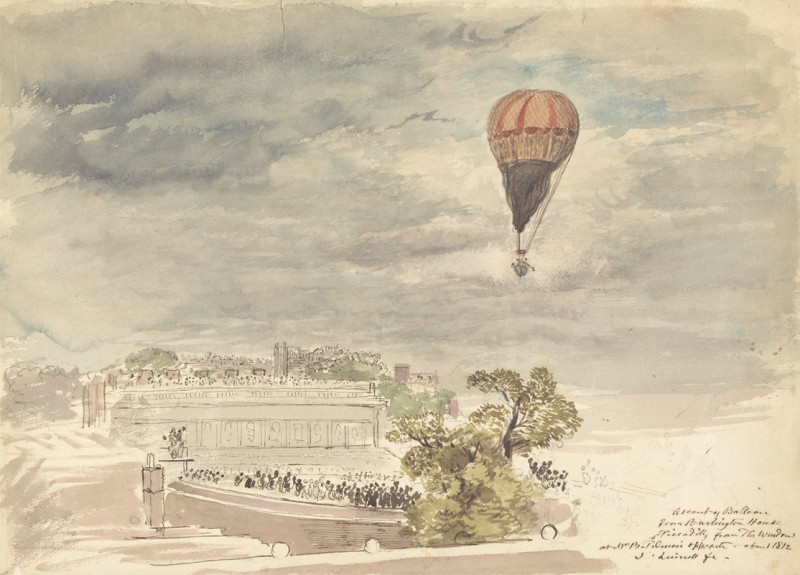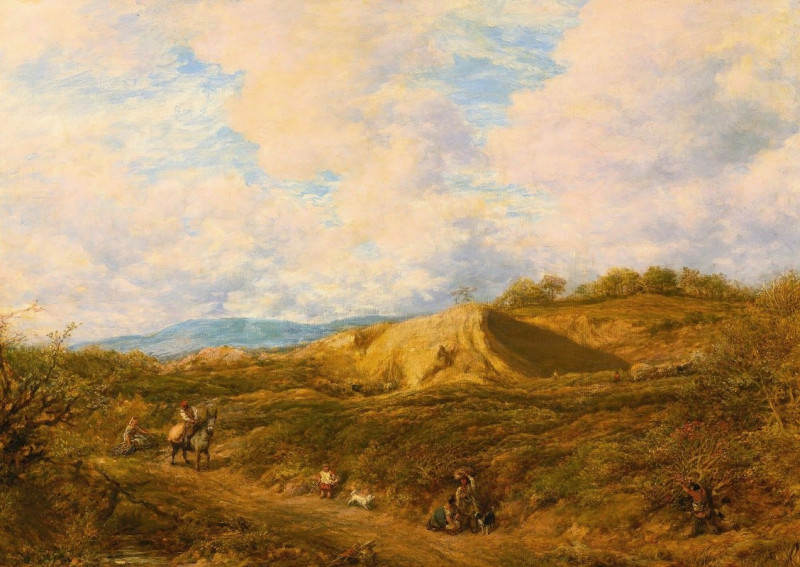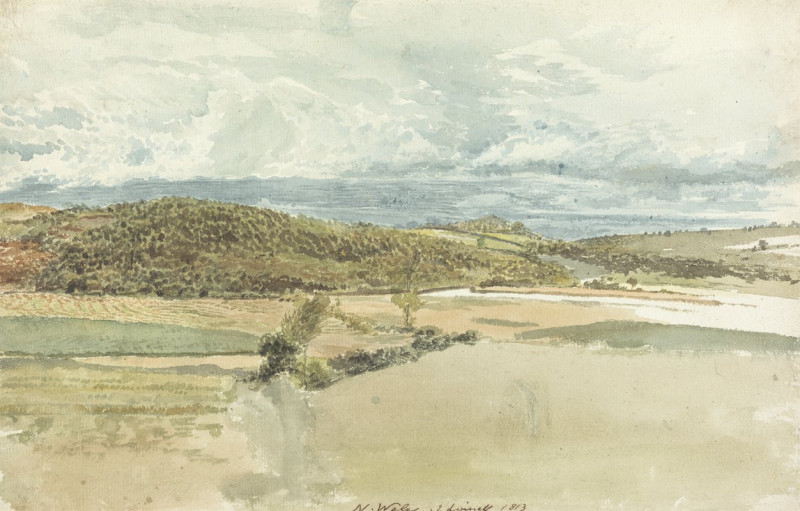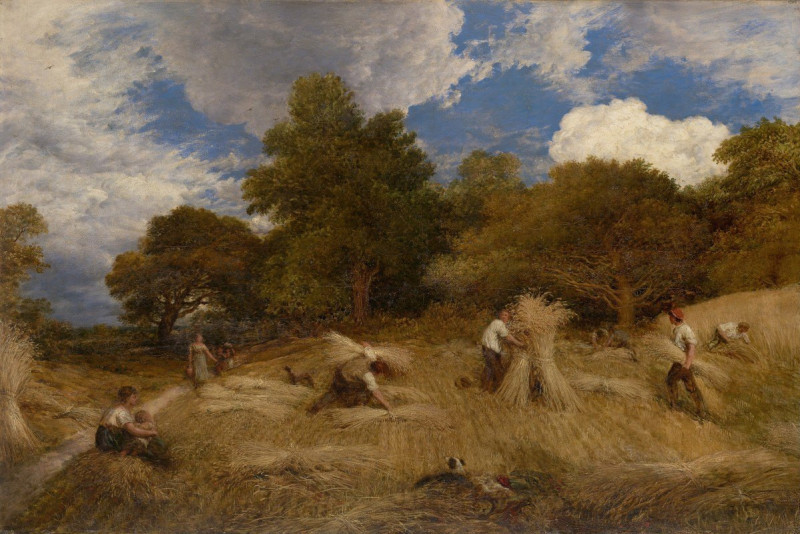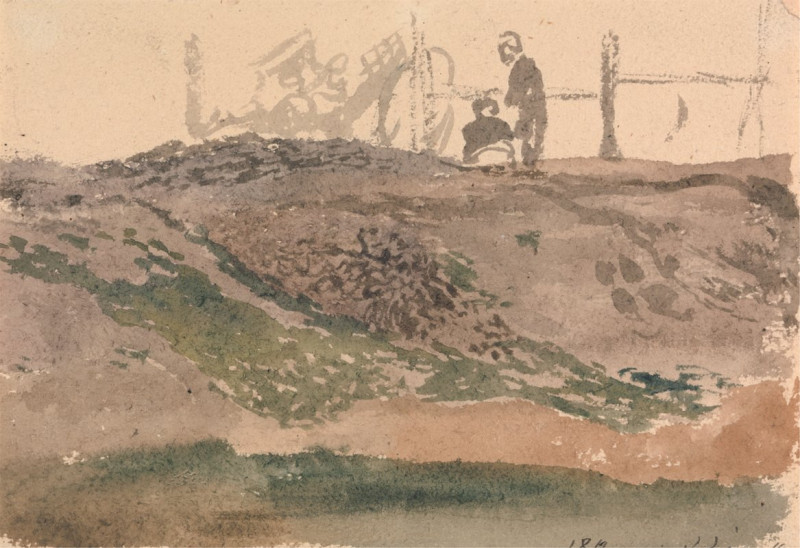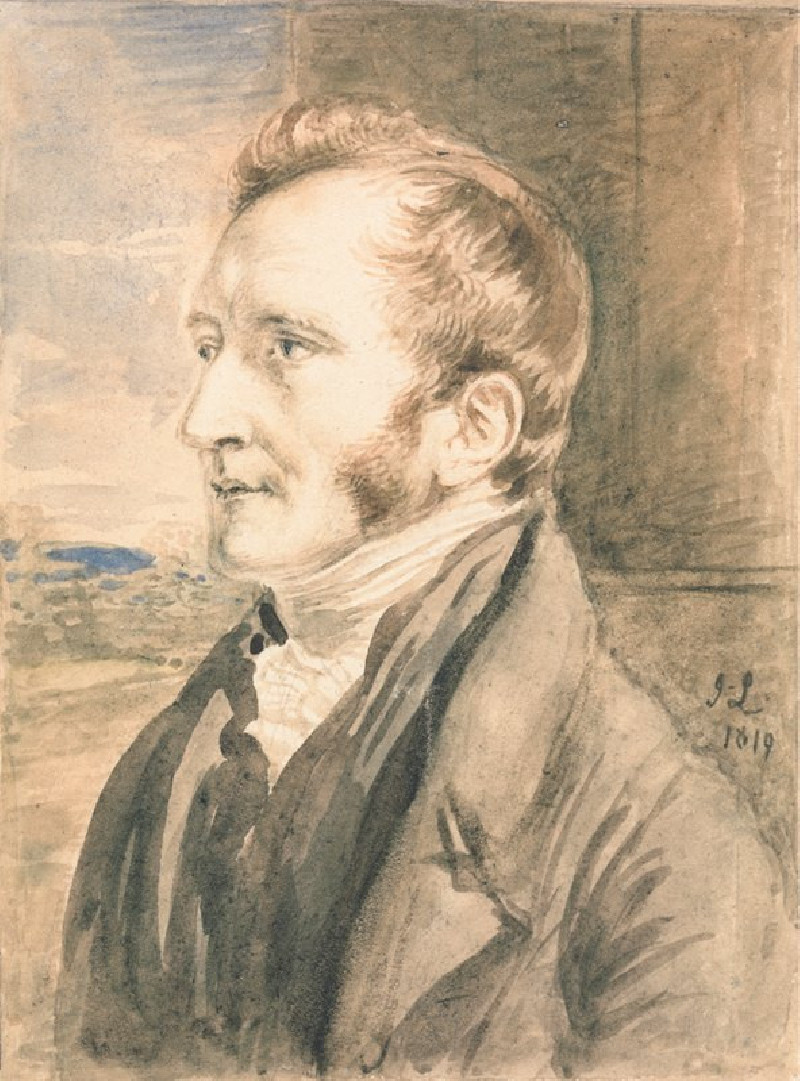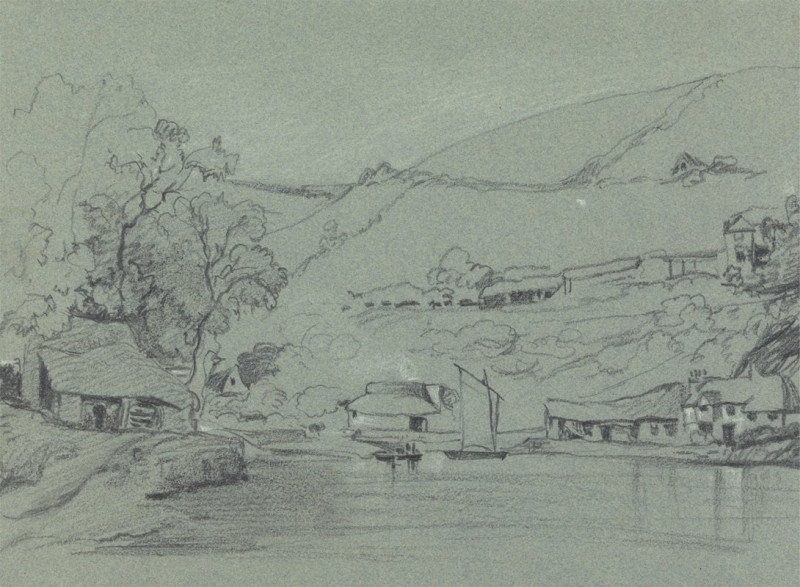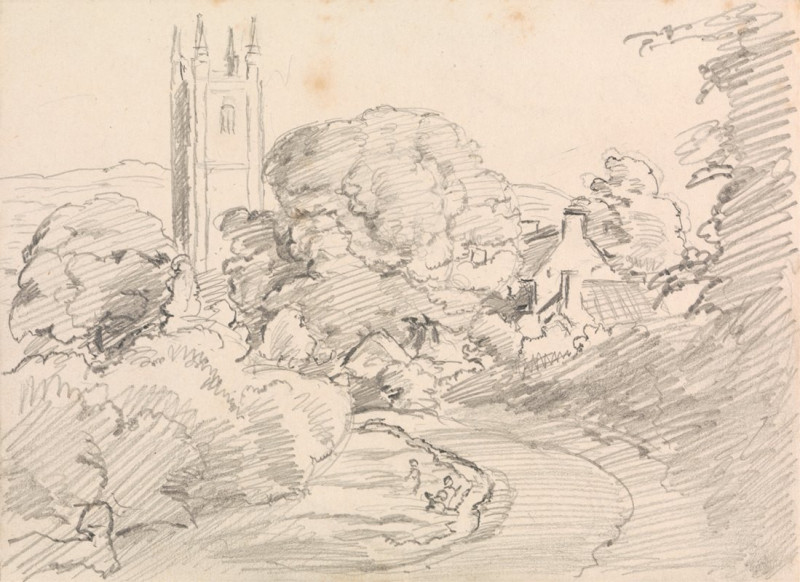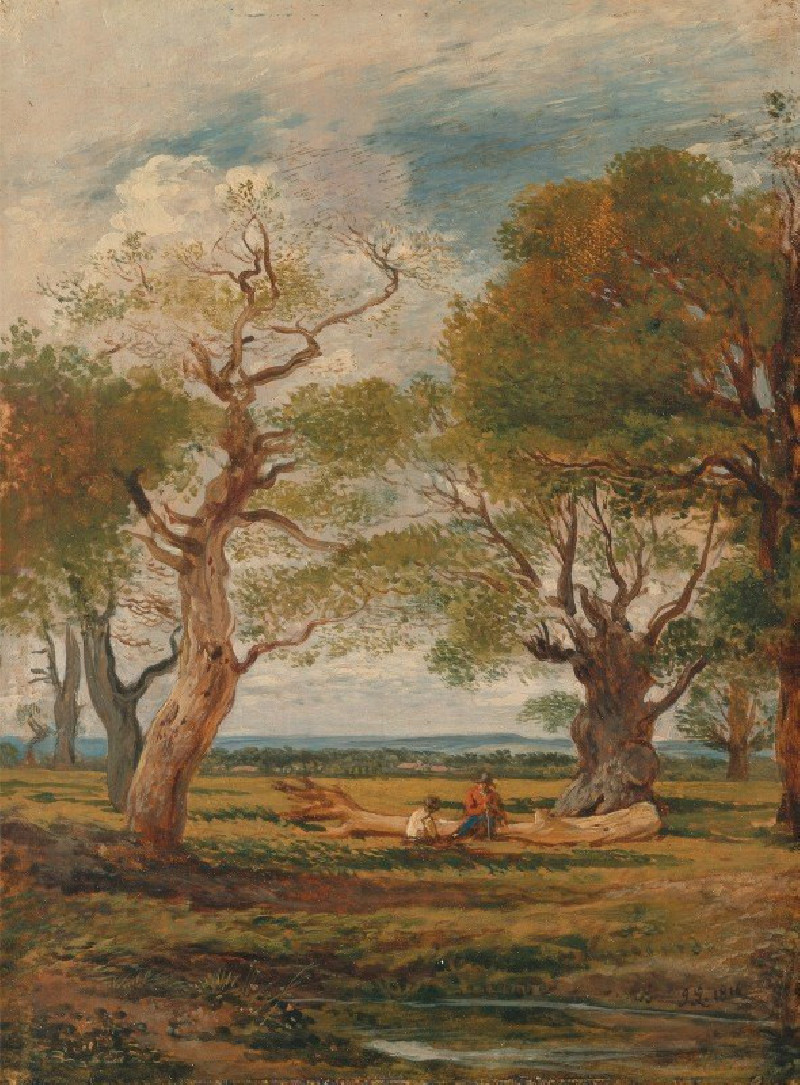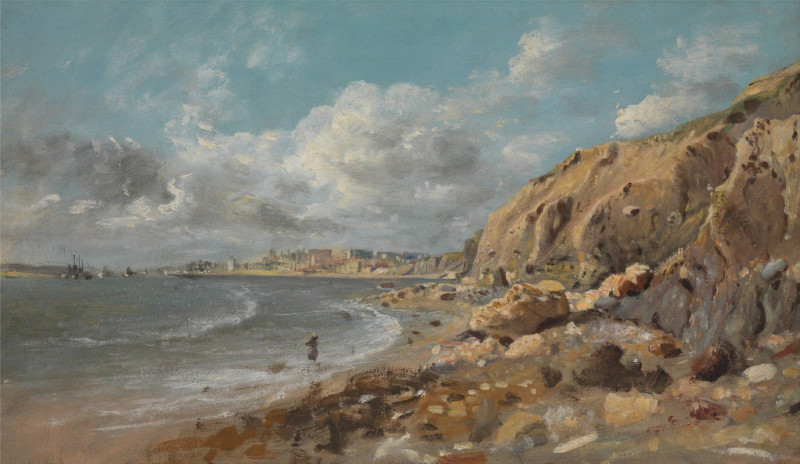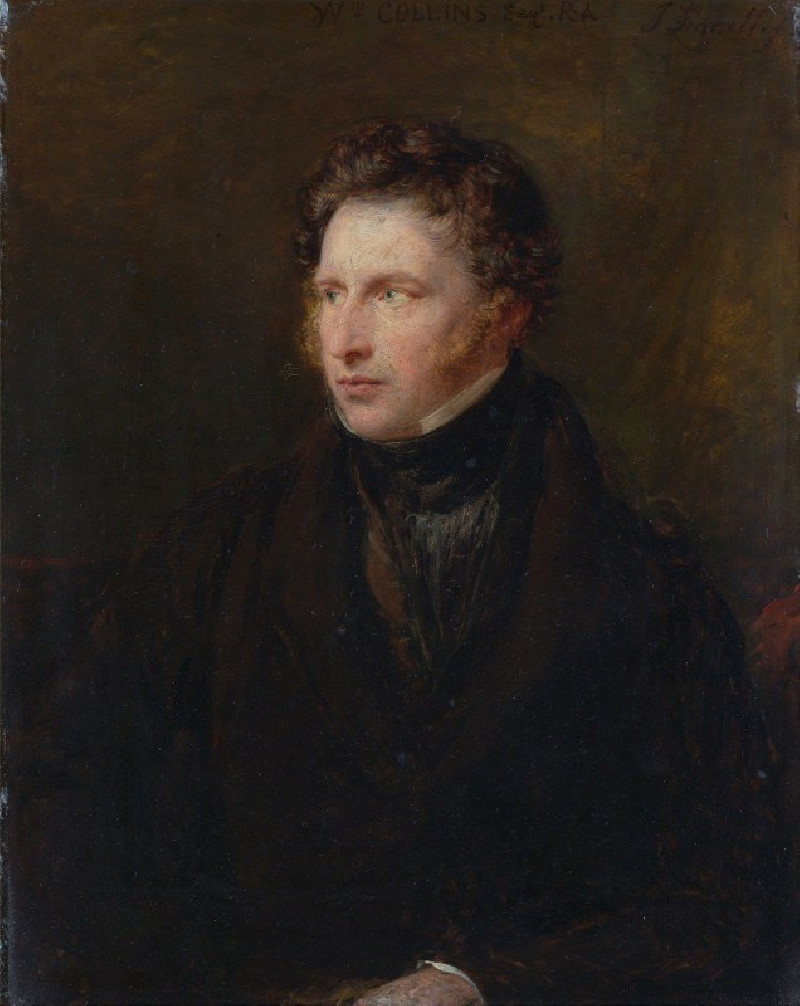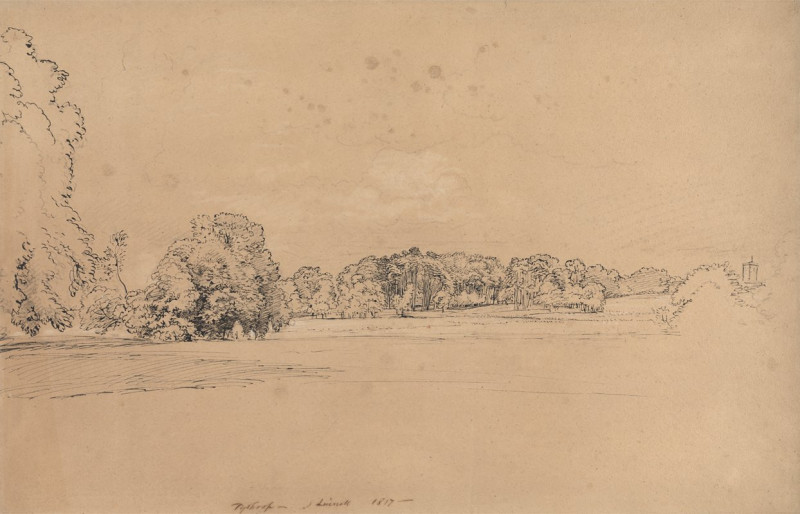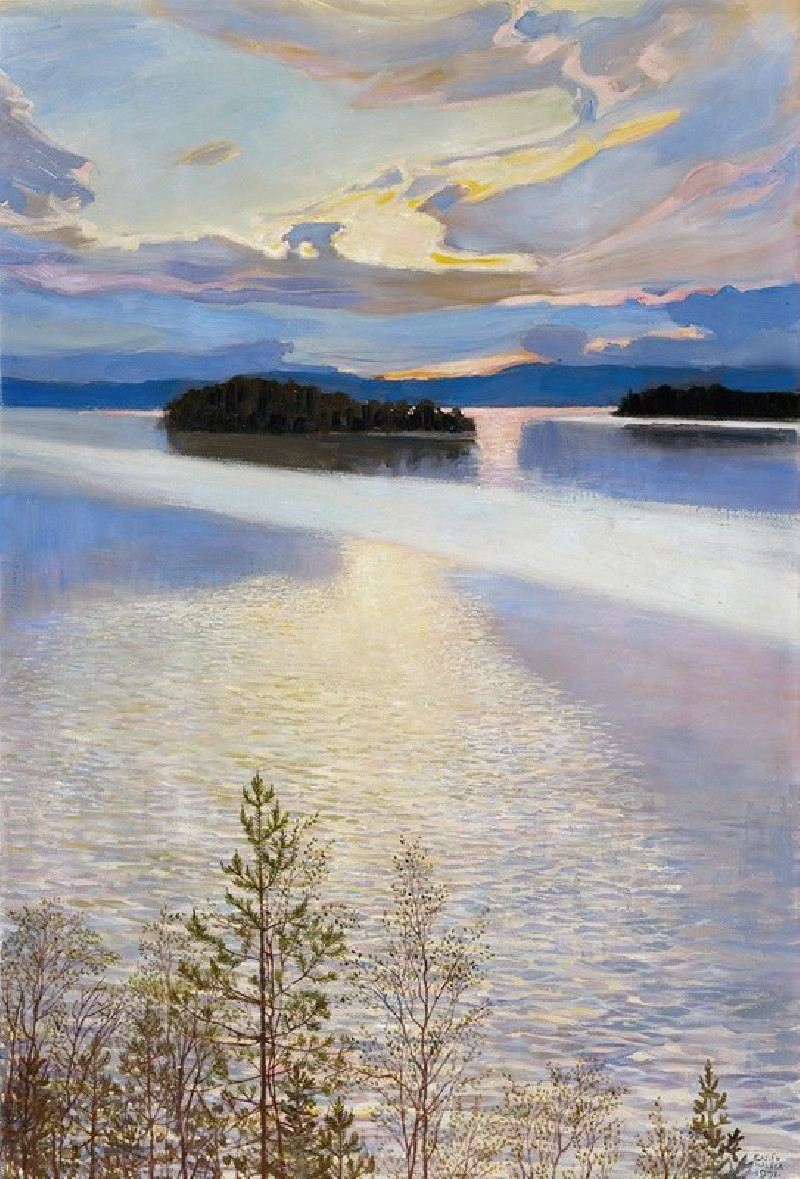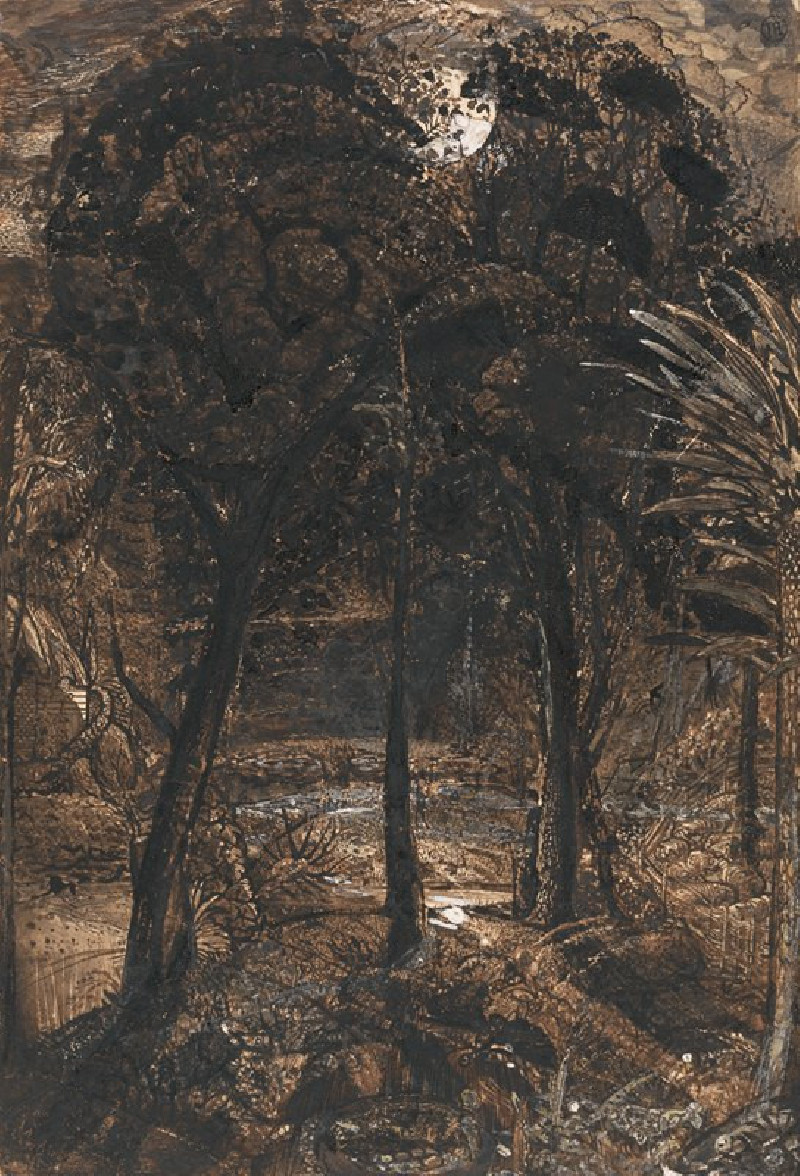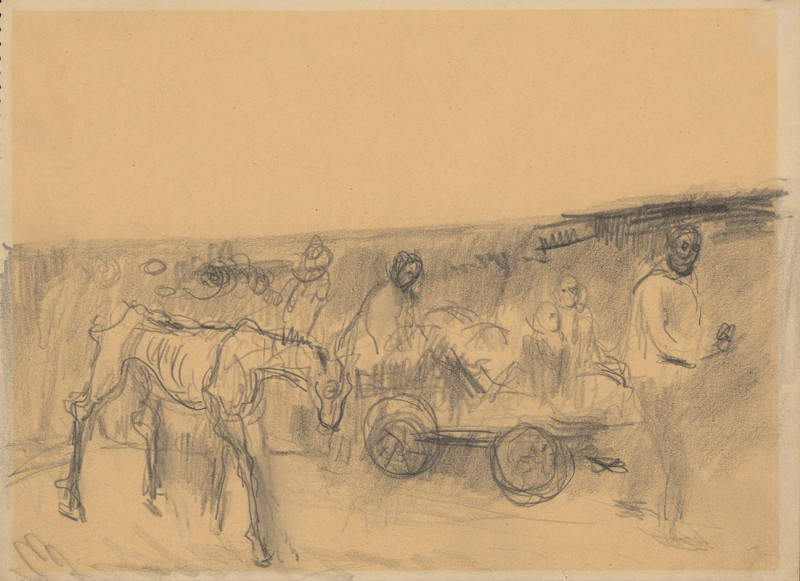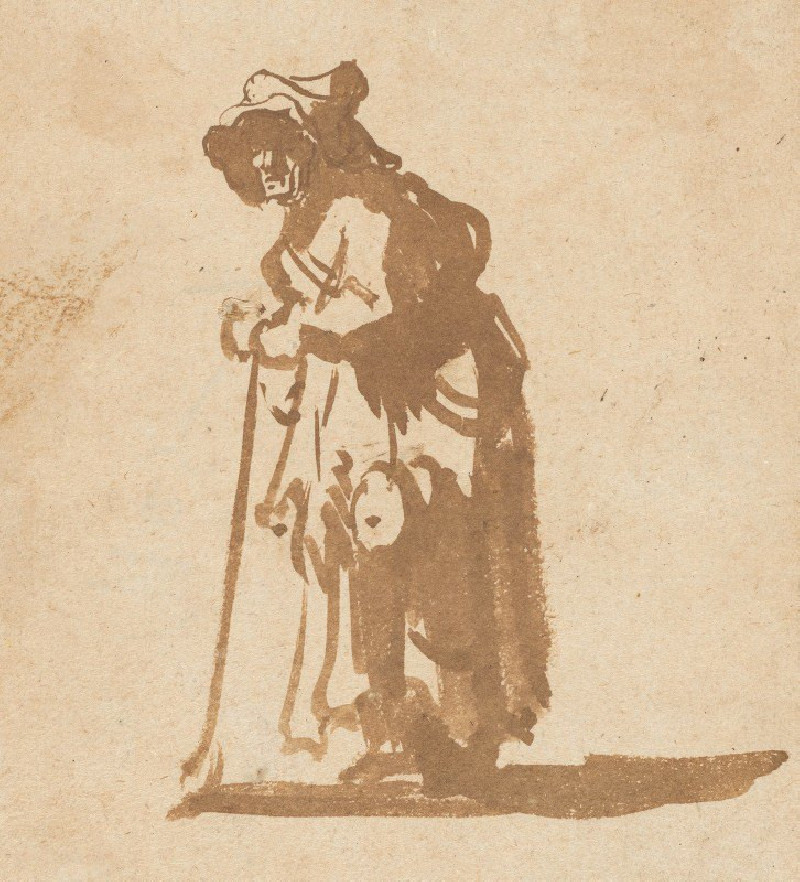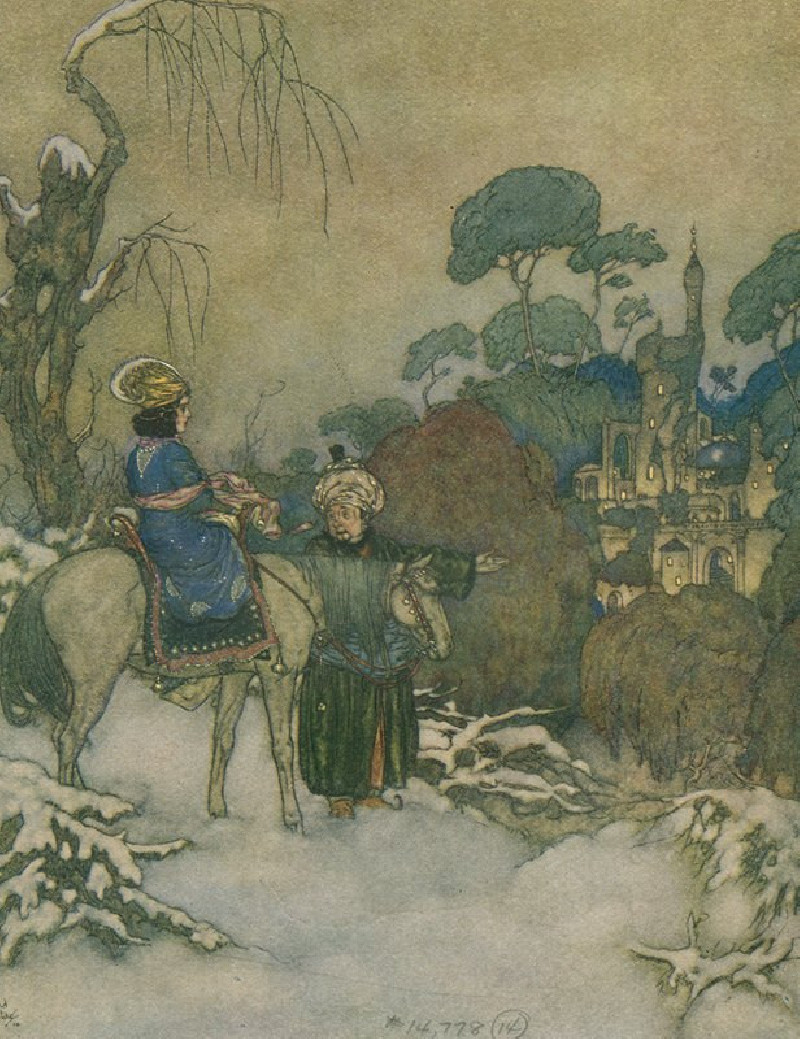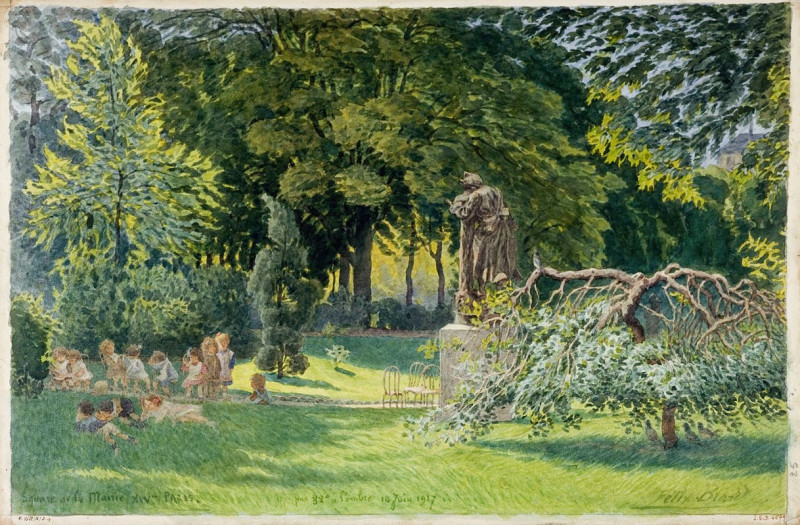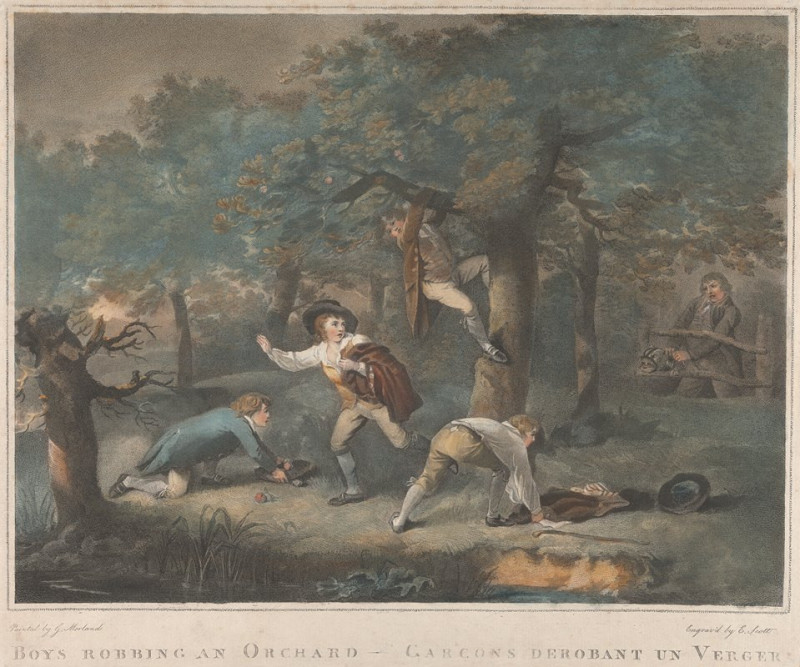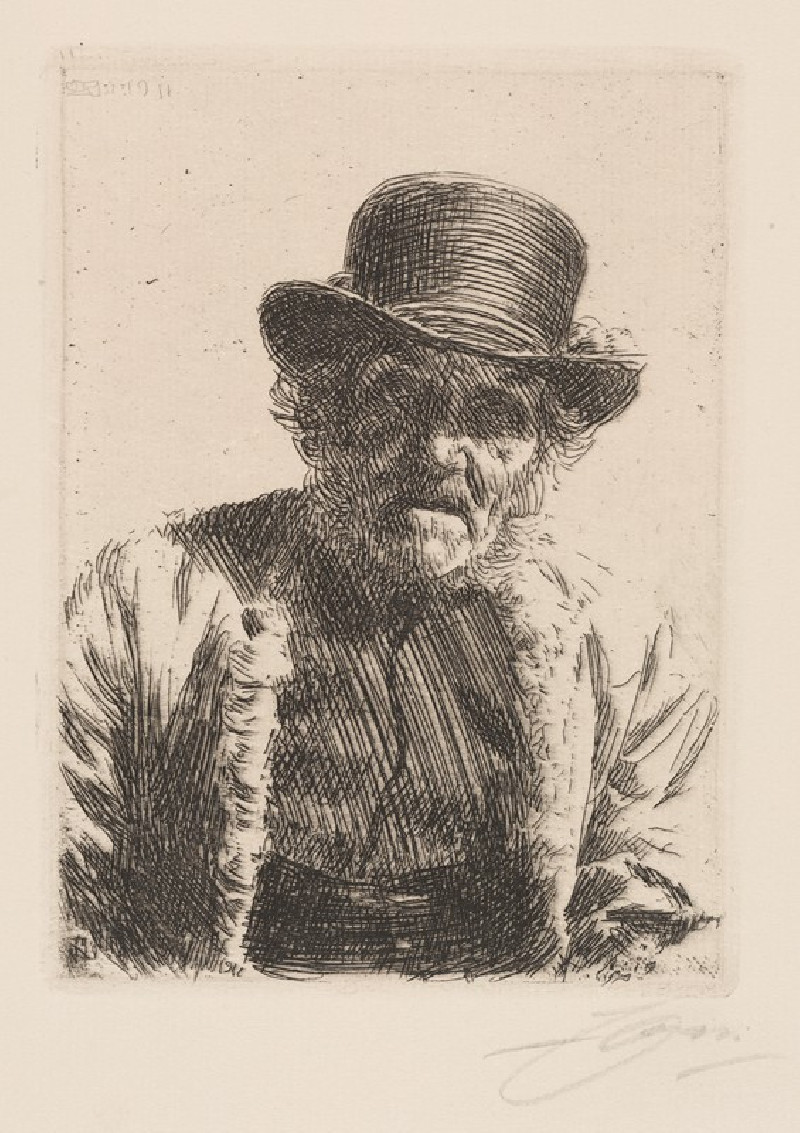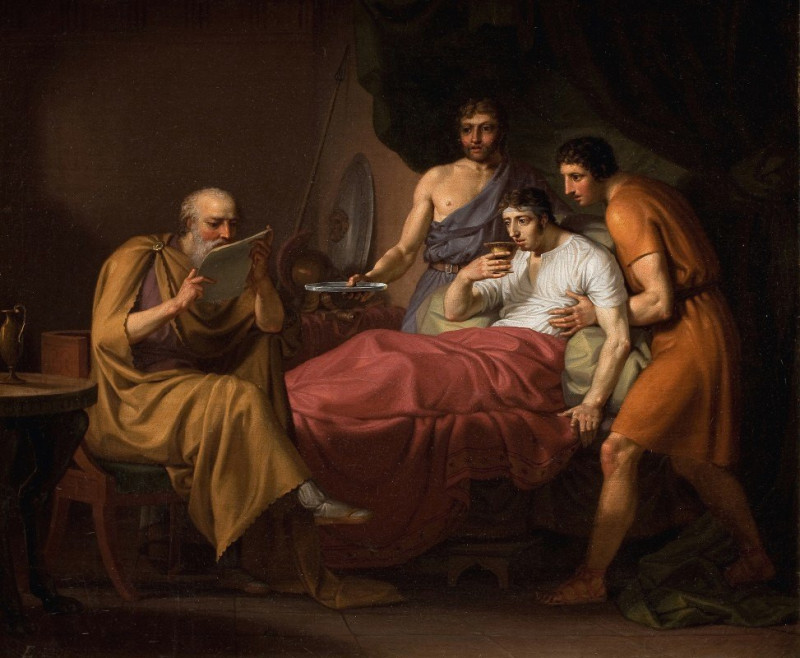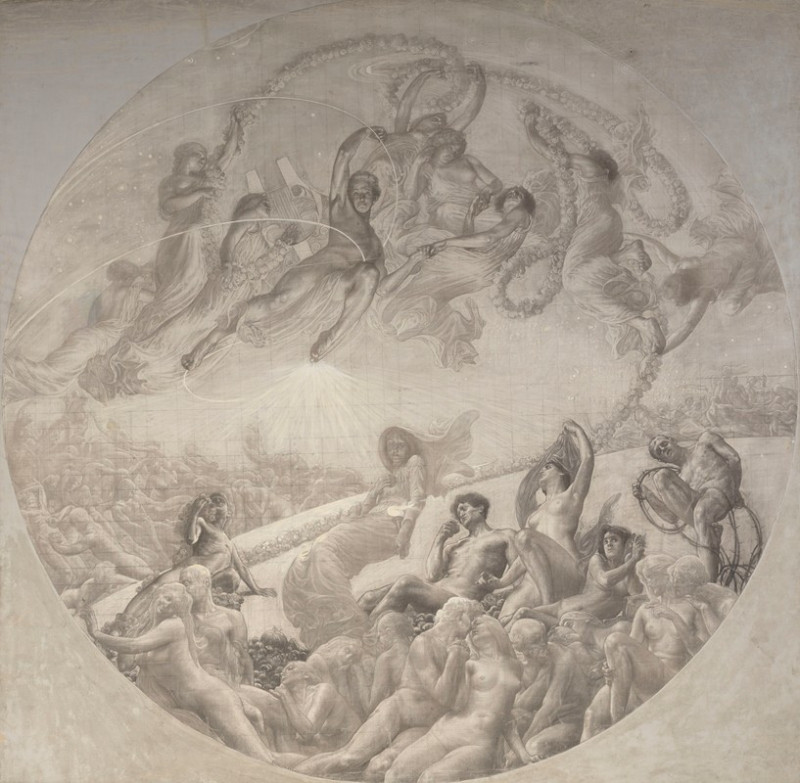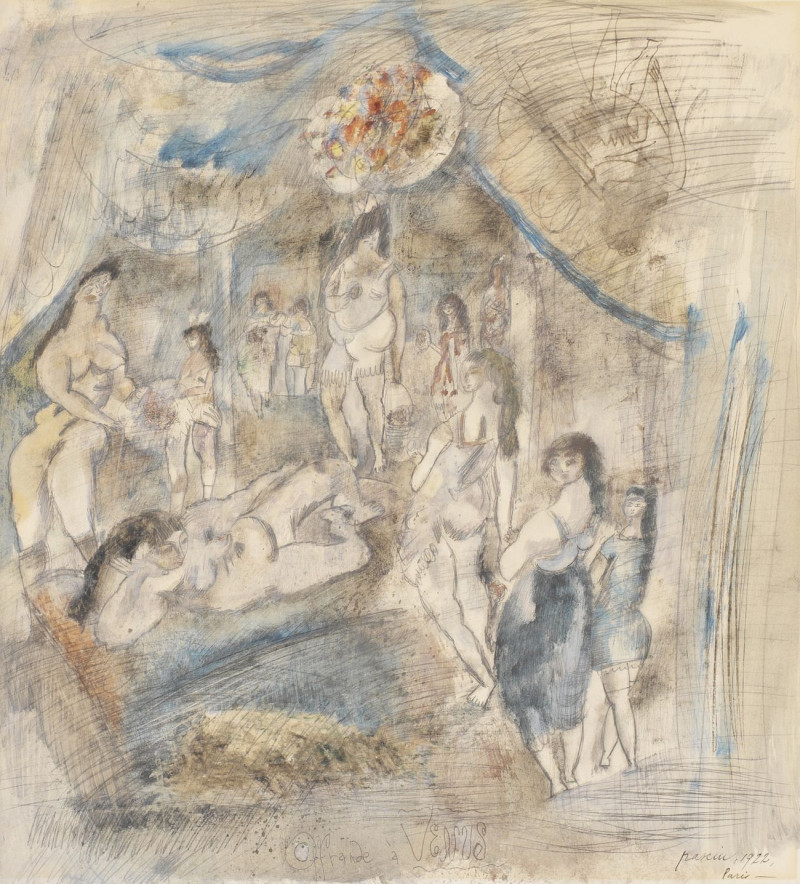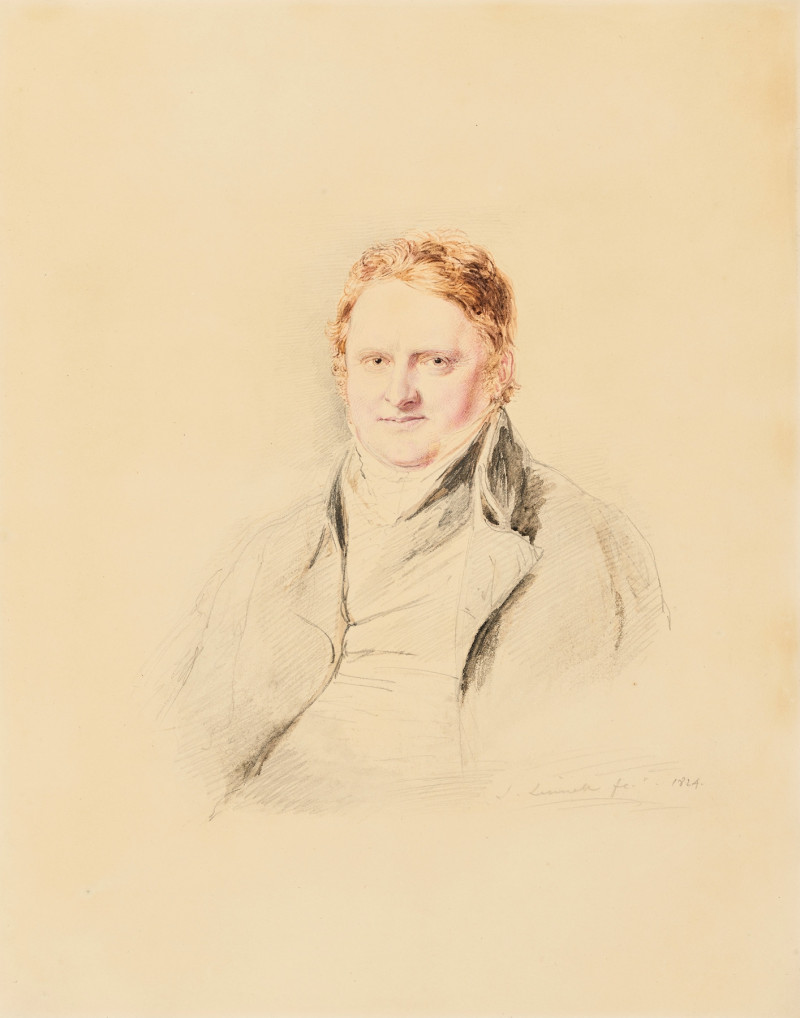The Farmyard (1812)
Technique: Giclée quality print
Recommended by our customers
More about this artwork
Welcome to the serene and pastoral world of John Linnell's "The Farmyard," a tranquil depiction of rural life from the early 19th century. This exquisite watercolor painting, crafted in 1812, captures a simple yet evocative scene of daily life that resonates with the timeless beauty of the English countryside.In “The Farmyard,” Linnell presents us with a tableau filled with earthy tones and soft hues, creating a harmonious and balanced composition. The foreground features a horse, partially harnessed to a cart, standing patiently as if taking a brief respite from its labors. Adjacent to the horse is another cart, laden perhaps with hay or produce, hinting at the day’s productivity.A noteworthy aspect of the painting is the play of light and perspective. Linnell's skillful use of light washes imbues the scene with a sense of freshness and airiness. The artist’s attention to detail is evident in the textures of the muddy ground, the wooden carts, and the wiry bare branches of the trees, which lend a stark contrast to the otherwise soft scenery.Adding life to the composition, a figure dressed in period attire and a hat appears beside the building to the left, possibly a farm worker overseeing the chores. The background unfolds with a gentle sweep of a fenced countryside, dotted with distant houses, under a broad, open sky that suggests a crisp, clear day."The Farmyard" is more than just a visual representation; it is a window into the past, reflecting the rhythms of rural life and the unspoken bond between humans and nature.
Delivery
Returns
John Linnell was an English engraver, and portrait and landscape painter. He was a naturalist and a rival to the artist John Constable. He had a taste for Northern European art of the Renaissance, particularly Albrecht Dürer. He also associated with Edward Thomas Daniell, and with William Blake, to whom he introduced the painter and writer Samuel Palmer and others.

